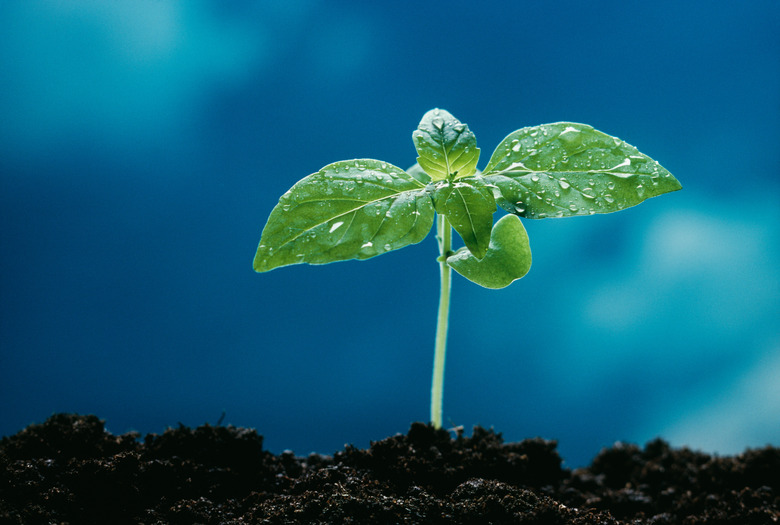Describe A Balanced Ecosystem
The Earth hosts a vast network of ecosystems, from tiny tide pools to broad deserts to polar ice shelves. An ecosystem is defined as the habitat in which animals, plants, and microorganisms interact with non-living factors such as landscapes and temperature. Balanced ecosystems maintain a flow of materials and energy. In a balanced ecosystem, an interdependence of each factor exists. Any waste materials can be used by living animals, plants and other organisms.
TL;DR (Too Long; Didn't Read)
A balanced ecosystem represents a sustainable habitat of interdependent animals, plants, and microorganisms and their environment. Balanced ecosystems display efficient energy and material cycling and interconnectedness between primary producers and predators.
Factors of Balanced Ecosystems
Factors of Balanced
Ecosystems
In a balanced ecosystem, the community of living (biotic) organisms interacts with non-living (abiotic) features in the environment. Abiotic features of ecosystems include precipitation, temperature, landscape, sunlight, soil or water chemistry, and moisture. The types of biotic factors in a balanced ecosystem include primary producers such as plants, primary consumers such as herbivores, secondary consumers such as carnivores, consumers such as omnivores that consume both plants and animals, and detritivores that eat decaying organic matter. Biotic factors rely upon abiotic factors to survive. Plants require certain temperature, moisture and soil chemistry to thrive. Animals rely on those plants for their food. Anything affecting any factor of an ecosystem can throw it off balance and force organisms to adapt or die off.
Energy and Material Cycling
Energy and Material
Cycling
A balanced ecosystem works via energy and material cycling. The chief energy source of ecosystems is sunlight. Photosynthesis of sunlight by plants creates oxygen as a waste product, which in turn is used in respiration by animals. Animals, in turn, create carbon dioxide as waste, and that is used by plants. The smallest organisms, microorganisms, decompose dead plants and animals into nonorganic material via enzymes. The conversion of the sun's energy to chemical energy for photosynthesis or respiration results in energy loss as heat. Balanced ecosystems require the sun's energy to exist and perpetuate the energy cycle.
Predators and Prey
Predators and Prey
Prey animals such as krill fuel the ecosystem in the oceans surrounding Antarctica. These tiny animals serve as grazers of phytoplankton, but also comprise the primary food source of many other animals, such as:
- seals
- penguins
- whales
- squid
- fish
- petrels
- albatross
Krill is therefore considered a keystone species, essential to the survival of the Antarctic ecosystem balance. Without krill, the Antarctic ecosystem would lose its biodiversity. A rich diversity of species sustains a balanced ecosystem.
Humanity’s Effects
Humanity's Effects
While humanity relies on balanced ecosystems for the pollination of plants, healthy soil, fish and meat, there are often negative consequences of human interaction. The introduction of waste (be it industrial, agricultural etc.) into an ecosystem by humans can lead to imbalance of nutrients. Clear-cutting timber leads to soil erosion and habitat destruction. The delicate ecosystems of rain forests have been threatened by such land conversion. Overfishing leads to disrupted food webs in the ocean. Encroachment of human populations into formerly sheltered ecosystems threatens them.
Fortunately, sustainable practices can offset human activity. Some examples include implementing fish quotas, using biofuels and replanting forests. Through continued awareness and research, humans can help study and maintain the Earth's balanced ecosystems, and learn how to help restore ecosystem disruption.
References
- The University of Michigan: The Ecosystem and How It Relates to Sustainability
- Yale Environment 360: The Crucial Role of Predators: A New Perspective on Ecology
- NOAA Fisheries Southwest Fisheries Science Center: Why Krill?
- USGS: Biodiversity Critical to Maintaining Healthy Ecosystems
- National Geographic Society: Ecosystem
Cite This Article
MLA
Hermance, Dianne. "Describe A Balanced Ecosystem" sciencing.com, https://www.sciencing.com/describe-balanced-ecosystem-5761235/. 10 April 2018.
APA
Hermance, Dianne. (2018, April 10). Describe A Balanced Ecosystem. sciencing.com. Retrieved from https://www.sciencing.com/describe-balanced-ecosystem-5761235/
Chicago
Hermance, Dianne. Describe A Balanced Ecosystem last modified August 30, 2022. https://www.sciencing.com/describe-balanced-ecosystem-5761235/
